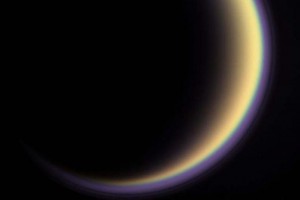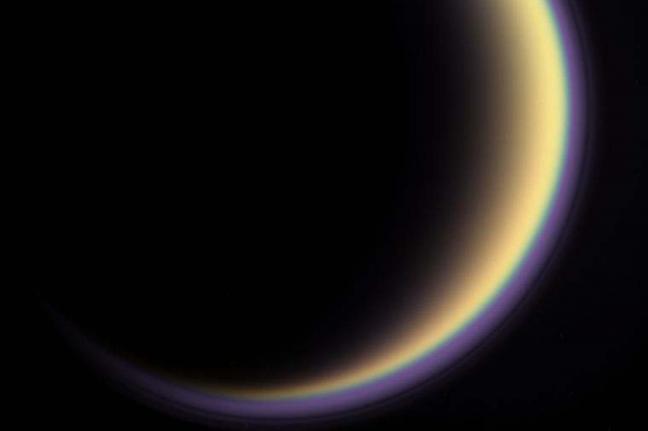Saturn’s Moon Titan and Earth Host Similar Polar Winds

LONDON, June 18 (UPI) — The atmosphere of Saturn’s moon Titan shares more in common with Earth’s atmosphere than scientists realized.
In analyzing seven years worth of data collected by NASA’s Cassini probe, astronomers have keyed on a unique interplay between Titan’s atmosphere, radiation levels and the moon’s solar magnetic field, resulting in polar winds that send waves of hydrocarbons and nitriles into space.
An instrument on the probe called the Cassini Plasma Spectrometer (CAPS) was essential in observing the streams of hydrocarbons coming from Titan’s poles. Researchers at the University College London say the winds are similar to those found emanating from Earth’s polar regions.
Along with Earth and Venus, Titan is one of only three bodies in the solar system with a rocky surface and a thick atmosphere. And like Earth, Titan is home to rivers, rain and seas.
“Titan’s atmosphere is made up mainly of nitrogen and methane, with 50% higher pressure at its surface than on Earth,” lead study author Andrew Coates, a researcher at UCL’s Mullard Space Science Laboratory, explained in a press release. “Data from CAPS proved a few years ago that the top of Titan’s atmosphere is losing about seven tonnes of hydrocarbons and nitriles every day, but didn’t explain why this was happening. Our new study provides evidence for why this is happening.”
As detailed in the paper, published this week in the journal Geophysical Research Letters, Titan’s polar winds are fueled by the interaction between sunlight, electromagnetic energy and molecules present in the moon’s upper atmosphere.
Titan doesn’t have its own magnetic field, but borrows one from Saturn. As light from the sun hits molecules in Titan’s upper atmosphere, or ionosphere, a plethora of photoelectrons are propagated throughout. These negatively-charged photoelectrons travel along the lines of Saturn’s magnetic field, creating a localized electromagnetic field strong enough to pull molecules from the ionosphere out into space.
Until now, the phenomenon has only been observed on Earth. Astronomers believe similar polar winds exist on Mars and Venus.







